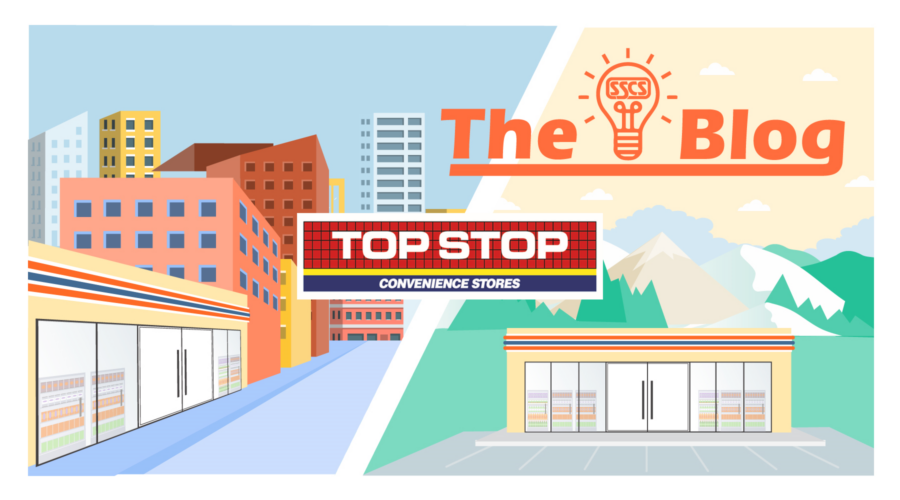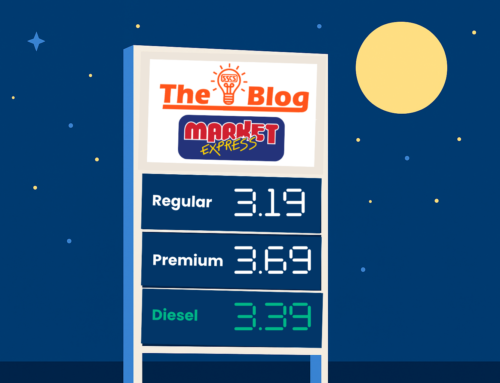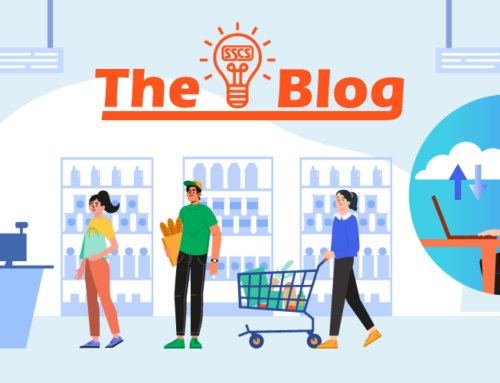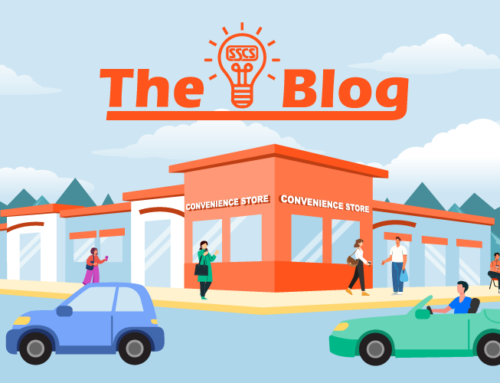
A convenience retailer with market distinction throughout Utah, Top Stop competes in remote hamlets and competitive downtowns with equal success.
SSCS customer Top Stop Convenience Stores is a 30-site operator headquartered in Salt Lake City (SLC),branded either with Chevron or Sinclair fuel. Founded in 1988, Top Stop’s story of rapid growth exemplifies how a family-run business can expand and succeed through operational excellence and prudent partnering. As we shall see, back office technology has played a substantial role in the advance of the organization.
Top Stop has been an SSCS customer for almost 10 years, and its noticeable footprint in Utah spreads far and wide, with 29 Top Stop sites located across the spacious Beehive State. Top Stop’s markets are quite varied within that footprint. Some are isolated and rural. Their lone store in Malad, Idaho, does business in a city with a population of just over 2,000—and it’s the only city in its county.
But Top Stop also flourishes in markets that are at the other side of the spectrum from Malad, such as the competitive retail valleys of downtown SLC, where the next c-store (or two) may be only a block away.

It’s probably natural to assume that the inventory in these stores would vary widely; hunters and fishers may look for different things than BYU students on class break, or a road tripper looking for refreshment on one of the main throughfares that crisscross the state.
Top Stop, however, makes it a point to keep its merchandise inventory across stores as consistent as possible, tweaking purchase patterns based on sales data coming out of its back office computer system. This speaks to the confidence they have in their stores’ ability to understand and satisfy customers.
“We want to create a strong sense of our brand, and providing consistency in merchandise contributes,” says Curtis Scharman, Top Stop Convenience Stores’ Marketing Manager. “Whether a customer is returning, or a visitor on the Interstate is seeing our logo for the first time, we want to be sure they know they’ll receive the same positive experience whatever site they stop at.”
The journey to becoming a trusted brand carrying inventory that people really want is markedly difficult without an up-to-date, detailed grasp of each store’s sales performance, complete with the data to back it up and the reporting to provide a complete understanding of the numbers. This requires technology.
Top Stop had been computerized, but by the time 2013 rolled around, they found their enterprise had outgrown their existing system. After due diligence, they made the decision to go with the Computerized Daily Book (CDB) back office system from SSCS.
“Among other issues, we had a need to oversee sales with an enterprise-wide lens, which was becoming more and more important as we grew,” explains Top Stop Controller Paul White, who, at the time, was charged with overseeing the new software’s deployment from the store’s side. “Our inventory may be standardized, but we adjust levels as needed, and shift the inventory mix as appropriate. We looked at the CDB and thought it had the scope and robust analytics to provide what we needed, with a selection of sales and inventory reports that were much improved over what we were using.”
Top Stop’s confidence in making the move wasn’t just a matter of software power and functionality, though, it was the way SSCS plotted out the deployment plan, and the confidence with which they did. “They were pretty scientific about their approach to implementation,” adds White. “When we strategized together, SSCS would cover not just the basics, but all the nuances of operations that we should be considering. They were seasoned; they had a definite method.”
The strategy was to set up one store first, work all the kinks out, step back for a period of time to see how things went live, and when it was time, begin implementing the procedural model across stores, with a nearby SSCS sales rep dropping by, as needed, for in-person feedback.
SSCS directly oversaw the installation of the first six sites. However, Top Stop handled all subsequent installations using their experience from the first six with phone support from SSCS, and an implementation template developed by the SSCS in conjunction with Top Stop decision makers. This is an example of the best kind of teamwork, which really starts before the first cable is run, and is a leading reason why Top Stop software installations successfully took place at the rate of one a week until completion.
Top Stop also didn’t miss a beat when it came to maximizing the benefits of SSCS software. But as we’ve run out of space for this post, you’ll just have to wait for next week’s. See you then!






Leave A Comment